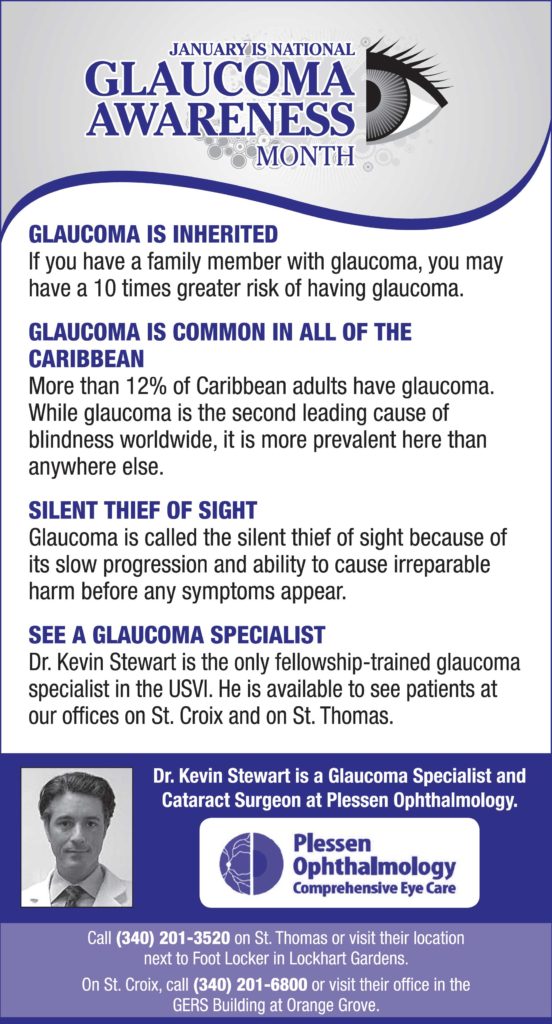Glaucoma (the sneak thief of sight) is an eye disease that is often associated with elevated intraocular pressure. This can cause damage to the eye (optic) nerve which can lead to vision loss and eventually total blindness. Glaucoma is the leading cause of irreversible blindness in the world. Glaucoma is usually treated with eye drops, although lasers and surgery can also be used. Most cases can be controlled well with these treatments, thereby preventing further loss of vision. Early diagnosis and treatment is the key to preserving sight in people with glaucoma.
Who gets Glaucoma?
- Family history of glaucoma
- People with abnormally high intraocular pressure
- People of African American, Hispanic, or Asian American descent
- People who have diabetes
- People who have myopia
- People with a previous eye injury
- Extremely high or low blood pressure
Glaucoma is more common, and more aggressive in the Caribbean population.
Early diagnosis and treatment is essential because vision loss due to glaucoma can be halted, not reversed. Treatment is necessary to lower eye pressure and prevent further damage to the eye optic nerve.


Dr. Kevin Stewart is a fellowship- trained glaucoma specialist. He served as the Assistant Director of Glaucoma Services at the New York Eye and Ear Infirmary and became an Assistant Professor of ophthalmology at NY Medical College in 2007.
At Plessen Ophthalmology, he treats and monitors all stages and types of glaucoma. Dr. Stewart has extensive experience monitoring and treating patients with glaucoma. In addition to treatment with medications and laser, he performs all modern and cutting-edge surgeries for glaucoma including aqueous shunts (tubes), trabeculectomies, and the newest Minimally Invasive Glaucoma Surgeries (MIGS) which include canaloplasty, goniotomy, istent, endocyclophotocoagulation, and other new trabecular bypass surgeries.

